See my longer “illustrated essay” on this topic.
In a recent post on the cover art of the French thinker Étienne de la Boétie I remarked about one cover that:
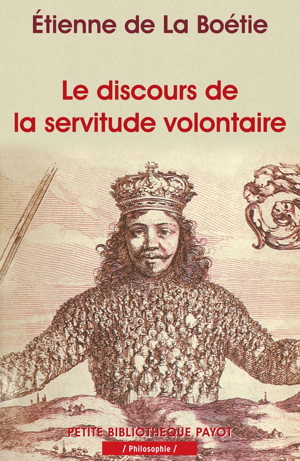
This edition by Payot (2016) shows the classic illustration from Thomas Hobbes’ book *Leviathan* (1652). The “leviathan” monarch’s body is composed of thousands of small figures of his subjects. If the individuals which made up the Leviathan’s body decided to walk away or do something else, then the “body politic” would collapse and the Leviathan would then no longer exist.
This got me thinking about the meaning of Hobbes’s frontispiece as a piece of political iconography, which is a topic I have been exploring for a couple of decades in my collection of “illustrated essays” on “Images of Liberty and Power”. There has been some interesting recent research on the imagery used by Hobbes in his political writings and I am glad to see the historical profession catching up with me.
In analysing Hobbes’ imagery there are a number of perspectives one could take.
The Biblical Leviathan
In the original story in The Book of Job (which Hobbes quotes at the top of the frontispiece to his book Leviathan (1652)) the arrogant and authoritarian Christian God boasts to the persecuted and hapless Job about the complex and magnificent things he alone had the power and the will to create, including “Behemoth” (a land-dwelling “beast” or “monster” which was unspecified in the Book but interpreted by later readers as being a hippopotamus, of all things) and “Leviathan” (a water-dwelling creature or “sea monster” which was also unspecified but later interpreted to be a whale or a crocodile, neither of which was a fish).
The most famous depiction of Behemoth and Leviathan was was the English radical poet William Blake who did illustrations for a published edition of The Book of Job (1821):

What caught Hobbes’ eye was this passage (Job 41):
23. The flakes of his flesh are joined together: they are firm in themselves; they cannot be moved.
24. His heart is as firm as a stone; yea, as hard as a piece of the nether millstone.
25. When he raiseth up himself, the mighty are afraid: by reason of breakings they purify themselves.
26. The sword of him that layeth at him cannot hold: the spear, the dart, nor the habergeon.
27. He esteemeth iron as straw, and brass as rotten wood.
28. The arrow cannot make him flee: slingstones are turned with him into stubble.
29. Darts are counted as stubble: he laugheth at the shaking of a spear.
30. Sharp stones are under him: he spreadeth sharp pointed things upon the mire.
31. He maketh the deep to boil like a pot: he maketh the sea like a pot of ointment.
32. He maketh a path to shine after him; one would think the deep to be hoary.
33. **Upon earth there is not his like**, who is made without fear.
34. He beholdeth all high things: he is a king over all the children of pride.
Hobbes’ Leviathan
Hobbes took a personal interest in the design of the frontispiece of his book as he wanted to show a direct connection between the image of Leviathan and the view of the state he advocated in the book. So, in the opening section he clearly stated that the “Governour” of the people should be feared and obeyed without question as if if he were a real “Leviathan” who had emerged from the depths of the sea:
Hitherto I have set forth the nature of Man, (whose Pride and other Passions have compelled him to submit himselfe to Government;) together with the great power of his Governour, whom I compared to *Leviathan*, taking that comparison out of the two last verses of the one and fortieth of *Job*; where God having set forth the great power of *Leviathan*, calleth him King of the Proud. *There is nothing, saith he, on earth, to be compared with him. He is made so as not to be afraid. Hee seeth every high thing below him; and is King of all the children of pride.* But because he is mortall, and subject to decay, as all other Earthly creatures are; and because there is that in heaven, (though not on earth) that he should stand in fear of, and whose Lawes he ought to obey; I shall in the next following Chapters speak of his Diseases, and the causes of his Mortality; and of what Lawes of Nature he is bound to obey.
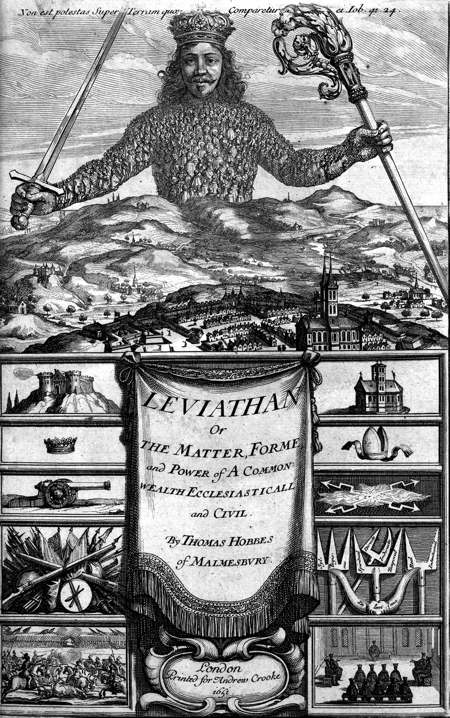
What this image and the fine detail which is not always obvious to the causal observer actually means is debated. One group have argued that Leviathan is an actual “Man-Fish” who has fins which are just barely visible over the crest of the hill just under the right arm of Leviathan:1
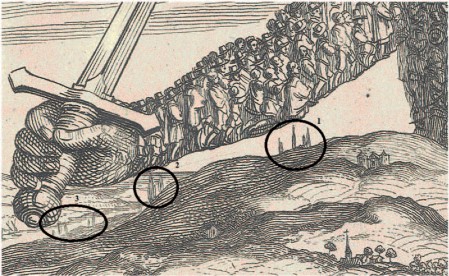
Thus a full body view of Leviathan might look something like this contemporary drawing:
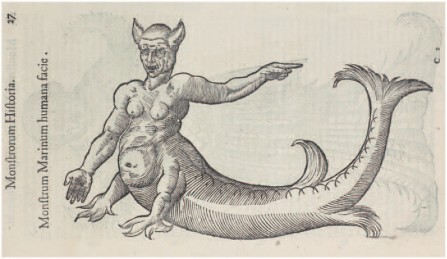
And that all the little people who seem to make Leviathan’s body are like the scales of a fish.
Another historian believes that Leviathan is really a “living statue”, an automaton, robot, or “Artificial man” like the ones described in ancient Greek stories of Daedalus and Prometheus.2 Hobbbes actually used the term “Artifical man” who had an “artificial soul” as well as joints and nerves and so on:
For by Art is created **that great Leviathan called a Common-wealth, or State**, (in latine Civitas) which is but an **Artificiall Man**; though of greater stature and strength than the Naturall, for whose protection and defence it was intended; and in which, the Soveraignty is an Artificiall Soul, as giving life and motion to the whole body; The Magistrates, and other Officers of Judicature and Execution, artificiall Joynts; Reward and Punishment (by which fastned to the seate of the Soveraignty, every joynt and member is moved to performe his duty) are the Nerves, that do the same in the Body Naturall; The Wealth and Riches of all the particular members, are the Strength; Salus Populi (the peoples safety) its Businesse; Counsellors, by whom all things needfull for it to know, are suggested unto it, are the Memory; Equity and Lawes, an artificiall Reason and Will; Concord, Health; Sedition, Sicknesse ; and Civill war, Death. Lastly, the Pacts and Covenants, by which the parts of this Body Politique were at first made, set together, and united, resemble that Fiat, or the Let us make man, pronounced by God in the Creation.
Hobbes’ Depiction of “Imperium” (Power) and “Libertas” (freedom) in De Cive (1642)
The image of Leviathan should be compared to another frontispiece Hobbes helped design for his book De Cive (On the Citizen) (1642) for more insights into his thinking about the the kind of state he wished to see rule over mankind.

For a fuller analysis of the meaning of these images please see the longer version of this post, my “illustrated essay”.
In essence he believes that a condition of “Libertas” without a powerful dictatorial state to keep things in check would result in a condition of constant war, cannibalism, and poverty as this detgail depicts quite graphically:”
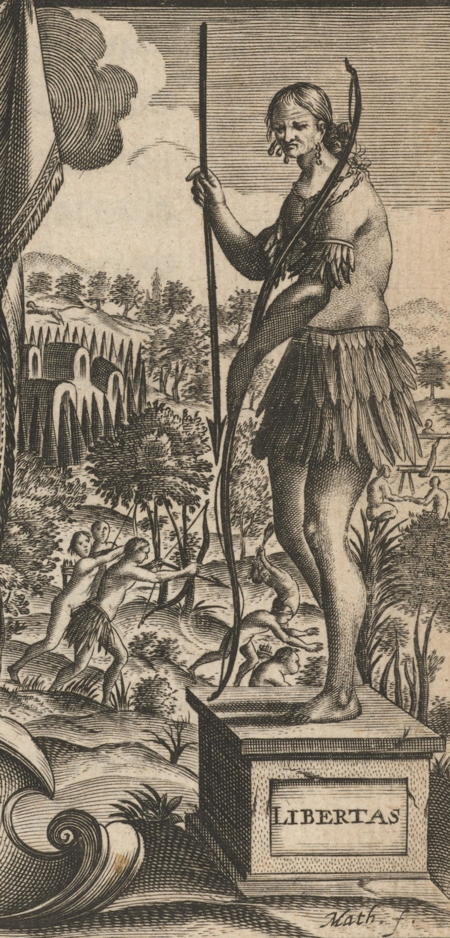
My response to the frontispiece of De Cive is that Hobbes has things completely backwards, that life under “Imperium” (Power) or total state control of people’s lives and property would be one of poverty, death, and uncertainty about the security of one’s life and property and an absence of all individual liberty.
In conclusion, I think that the purpose of images such as those in the frontispieces, especially that of Leviathan, was one of propaganda for the absolutist state, or rather a Christian dictatorship or “Christian Common-Wealth” as he called it, to depict in a visually striking and powerful manner, the size and overwhelming power of the “Common Power”, the “Common-Wealth”, the “State” as he wanted it to become. These images were designed to instill awe and fear in the hearts and minds of ordinary citizens who would never dare from now on to challenge the power of the Leviathan State. They would be “terrified” of this power and what could happen to them if they challenged it or disobeyed its command.
- Magnus Kristiansson and Johan Tralau, “Hobbes’s hidden monster: A new interpretation of the frontispiece of Leviathan,” European Journal of Political Theory (2014 13: 299). [↩]
- Horst Bredekamp, Thomas Hobbes Visuelle Strategien. Der Leviathan: Das Urbild des modernen Staates. Werkillustrationen und Portraits. Berlin, Akademie, 1999. [↩]
